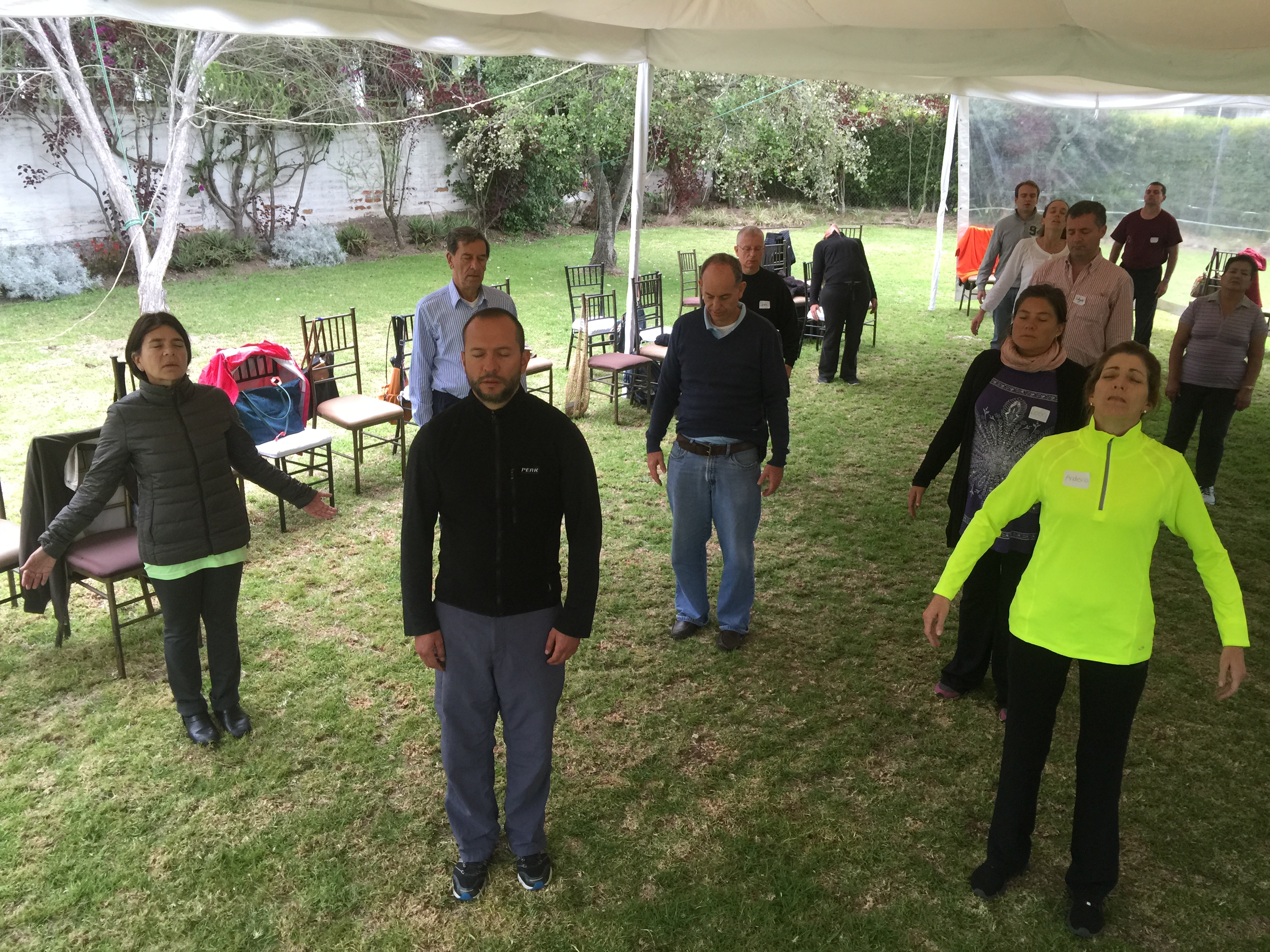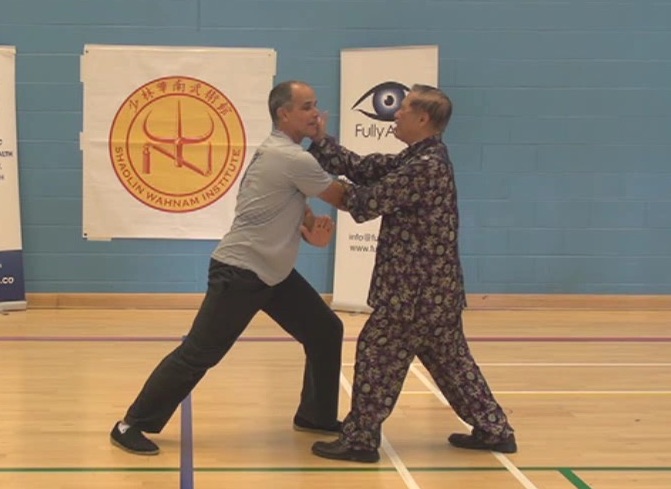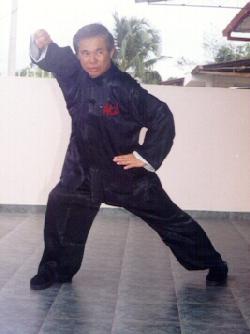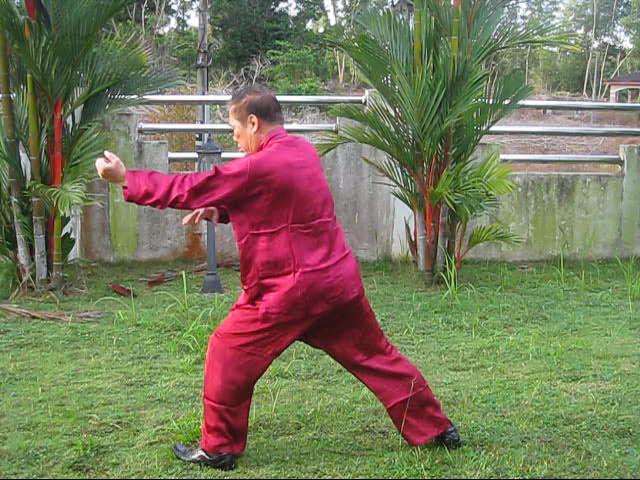SELECTION OF QUESTIONS AND ANSWERS
MARCH 2023 PART 2

Chi flow is a very important aspect of chi kung
Question 1
I have a burning desire to learn proper chi kung
— Abir, England
Answer
Practicing chi kung is one of the best things that anyone can do. Accomplished in the Shaolin arts -- and our chi kung comes from Shaolin -- is better than changing stones to gold by touch. I thought it was exaggerated, but now I realize its truth.
I remember that I taught to a lovely lady who had cancer. She told me that she could die any time, but she knew she would live if she practiced chi kung. She recovered from cancer. At first I thought it was poetic, but later I realized its truth. When there is chi, there is life.
Most people practice gentle, physical exercise, but they do not know it. If you are not in a chi kung state of mind, or a higher level of consciousness, you only practice gentle, physical exercise.
It is the skill of entering into a chi kung state of mind that is most important. It is not the chi kung exercises that you perform. You can practice the chi kung forms, like Lifting the Sky, Carrying the Moon, Flexing Finger and Clenching Fists, but if you are not in a chi kung state of mind, you only perform gentle, physical exercise.
Question 2
I will like to start training the Dragon Strength set again, and alternate between that and the Wudang Kungfu set. What do you think?
— Sifu Angel Perez, Shaolin Wahnam Costa Rica
Answer
Dragon Strength is a wonderful art.
Many Taijiquan masters believe that one can use mind to move energy, and use energy to move form. Although I disagree with the statement, as the pinnacle of Taijiquan is to become an immortal or to merge with the Cosmos, I used mind to move energy, and energy to move form. It was a tremendous success, I was so fast that people could not see my movements.
We can also use Dragon Strength to generate force, from flowing force to consolidated force. Flowing force is for health and vitality, and consolidated force for work. But we are so forceful that even when we think there is not much force, our force can be very damaging to others.
However, Dragon Strength is lacking in combat application. Force training and combat application are the two pillars of good kungfu training. For combat application, we can turn to the 16 Shaolin combat sequence or the 12 Taijiquan combat sequences. My combat sequences are excellent. When I first started teaching, many people suggested that we changed to Masters' Kungfu, but I told them our combat sequences were basic.
For our advanced levels, we can turn to combat sequences from Essence of Shaolin. This will make us into the "marvellous" level. Even genuine masters may not attain the "marvellous" level. There are 108 combat sequences in Essence of Shaolin, but we need to train only 2 or 3! I didn't use the combat sequences from the "marvellous" level. My force and speed are sufficient to handle masters and prefessional fighters.
Dragon Strength and Wudang Kungfu are a wonderful combination. They are the best in any kungfu.

Gramdmaster Wong and Sifu Angel engaged in Wudang Taijiquan in a pattern named "Light Breeze through Sleeves"
Question 3
How was Chen Taijiquan created?
— Nathaniel, USA
Answer
Zhang San Feng settled on the Wudang Mountain. He was inspired by a fight between a bird and a snake. It was not mentioned what the bird was, but later descriptions said that it was probably an eagle, though earlier descriptions said it was a sparrow. A sparrow, however, is too small, but an eagle suits the descriptions, especially when there are eagle patterns in the current Wudang Taijiquan which is reputed to come from Zhang San Feng.
Zhang San Feng did a special thing, for which we in Shaolin Wahnam are especially grateful. Earlier, students at the Shaolin Monastery in Henan practiced kungfu, chi kung and Zen (or spiritual cultivation) separately. But since Zhang San Feng, the three separate arts are practiced together, though not many people know about it. In other words, kungfu, chi kung and Zen are not practiced separately but practiced together as one unity, in what is known as triple-cultivation, that is the cultivation of the physical, energy and mind.
Zhang San Feng did not consciously practice the three separate arts as one unity. He probably went into meditation, and his meditation led him into chi flow. His chi flow did not follow a definite sequence each time, but generally a definite sequence evolved. Later when he taught his students, he styled this sequence into a set. Zhang San Feng is known as the First Patriarch of Internal Arts.
At first, Zhang San Feng did not call his art Wudang Taijiquan, but later to differentiate the art practiced at the Shaolin Monastery at Henan and the art practiced by Zhang San Feng on Wudang Mountain, the art at Henan is called Northern Shalin Kungfu and the art on Wudang Mountain is called Wudang Taijiquan.
A few centuries later a Ming general, Chen Wang Ting used Taiji principles to explain the philosophy of Taijiquan. Hence, Chan Wang Ting is regarded as the First Patriarch of Chen Style Taijquan.
This information is generally not known to the public, but is based on research.
Question 4
How can I learn Chen Taijiquan for combat application?
Answer
There is much information on the combat application of Chen Style Taijiquan. "Immortal Pounds Mortar" in https://www.shaolin.org/combat/immortal.html, and "Seven-Star Anchorage" and "Slantingly Throw Step" in https://shaolin.org/combat/seven.html are some examples.
If you wish to practice Chen Style Taijiquan you must practice it as a martial art, even when you are not interested in its fighting aspect. If you practice it as a dance, which most people do, you will miss many of its wonderful benefits, which include combat application and internal force. Internal force, which is a feature in Taijiquan without which Taijiquan will not be meaningful, is not just for a martial art but for life.
Finding a teacher to teach you is difficult. Most people practice it as a dance. Please remember that a genuine Taijiquan master has no obligation to teach you. Many genine Taijiquan masters may not want you to know that they practice a martial art.
If you practice Taijiquan as a genuine martial art -- most people practice it as a dance, and they do not realize it -- you must be healthy. If an attack is coming at you, you have to react fast. If you fail in the attack, you do not blame him for being too fast for you. You take responsibility to be faster than your attacker, or you use tactics to slow him down. Of course, these wonderful benefits can be used for daily life.

Seven-Star Anchorage
Question 5
Being a father is one of the best things in this world.
— Steffen, Germany
Answer
It is great to be a father (or a mother). We must always be loving to our wife.
Question 6
It has made me wonder how to proceed with stance training / moving in stances at my current level.
Answer
I cannot remember the courses you have taken, but moving in stances needs to be taught in person. Most people neglect his aspect of training, but to me this is a very important aspect.

Reverse Hanging of Golden Lotus
Question 7
My main force training methods are One Finger Shooting Zen and Dragon Strength from which I derive marvellous benefits.
Answer
One-Finger Shooting Zen is a treasure of Shaolin Wahnam. As we have many arts, it must be very special to be a treasure. That was how I developed my internal force. Most people do not have any internal force; they depend on brutal strength.
As you know well, Dragon Strength is my favourite. In my student's days, I was fascinated by speed. Many Taijiquan masters use mind to move energy, and energy to move form. I tried that. It was a tremendous success. I could move so fast that people could not see my movements.
Notwithstanding, there is a setback in Dragon Strength. It is excellent for force training, but is lacking in combat applications. In my early years of teaching, I devised combat applications to speed up sparring. If you wish to go to the marvellous level, you can select two or three sequences and practice them very well.
Question 8
It is always a great honour to be in contact with you.
Answer
Even genuine masters may not attain the marvellous level. There are 108 sequences, but you select only two or three. Some of the sequences are so marvellous that you may never think of them.
I recall that once I was sparring with another master. He gave me a low punch. I can't remember whether I warded it off, or gave him a hand-sweep.
Almost instantly he swung his reverse back hand in a pattern called "Reverse Hanging of Golden Lotus" on my face. I calmly ward off this attack. He was so impressed that he asked me to teach him a few combat sequences.
If you have any questions, please e-mail them to Grandmaster Wong via his Secretary at stating your name, country and e-mail address.
LINKS
Selected Reading
- Shaolin Chi Kung Eighteen Techniques
- Sending Healing Energy to Someone Unknown
- Various Styles of Kungfu
- Shaolin Kungfu for Combat Efficiency, Good Health and Spiritual Development
- Instill Confidence in Chi Kung Healing
